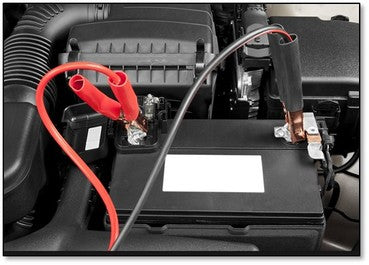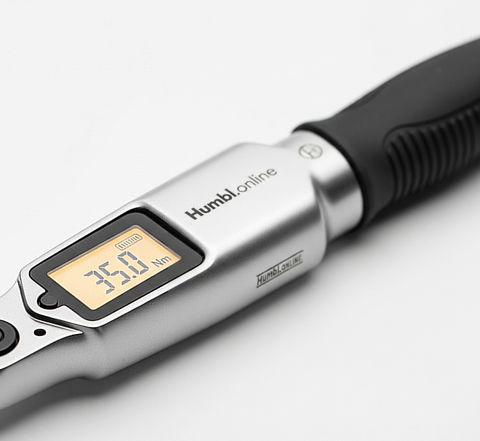
Dead Car Battery? How to Jump Start Your Car Quickly and Safely
Share
Jump-Starting a Car: The Ultimate Guide to Reviving a Dead Battery (and Avoiding Explosive Situations)
A dead car battery is a universal experience for drivers, a frustrating symphony of clicks and whirs when you're already late for work or stranded in the middle of nowhere. But fear not, fellow motorists! With a little know-how and a trusty set of jumper cables, you can resurrect your lifeless vehicle and be back on the road in no time.
But first, a safety briefing: Jump-starting involves electricity – a powerful force that demands respect. One misstep could lead to sparks, shocks, or even a battery explosion. So, proceed with caution and follow these steps meticulously.
Here's the breakdown, step-by-step:
1. The Setup (Safety is Paramount!)
- Park it Right: Position the "live" car with the good battery nose-to-nose with the "dead" car, close enough for the jumper cables to reach but not touching. This ensures a safe distance while allowing the cables to do their job.
- Engage Safety Measures: Turn off both engines, put both cars in park (or neutral for manual transmissions), and engage the parking brakes. This prevents any unexpected movement during the process.
- Gear Up: "Safety glasses and gloves are non-negotiable," insists veteran mechanic Bob Johnson. "Battery acid is corrosive, and you don't want to risk eye or skin damage."
2. Connecting the Positive (+) Leads
- Identify the Positive Terminals: Locate the positive (+) terminal on each battery. It's usually red and marked with a "+".
- Connect the Red Cable: Clamp one end of the RED jumper cable to the positive (+) terminal of the DEAD battery. Ensure the clamp is securely attached to avoid any accidental disconnections.
- Connect to the Good Battery: Clamp the other end of the RED cable to the positive (+) terminal of the GOOD battery. Again, ensure a secure connection.
- Expert Insight: "A loose connection can lead to arcing, which can damage your car's electrical system," warns electrical engineer Dr. Sarah Lee. "Always double-check those clamps!"
3. Connecting the Negative (-) Leads
- Connect to the Good Battery: Clamp one end of the BLACK jumper cable to the negative (-) terminal of the GOOD battery.
-
Connect to the Dead Battery (or Ground): This is where things get a bit debated.
- Direct Connection: Most sources recommend connecting the other end of the BLACK cable directly to the negative (-) terminal of the DEAD battery.
- Grounding Point: Some, like DIY enthusiast Mike Davis, suggest connecting the black cable to "a clean, unpainted metal surface on the dead car's frame or engine block." This method is believed to reduce the risk of sparks near the battery.
- The Verdict: Both methods are generally safe, but connecting directly to the negative terminal often provides a stronger connection.
4. Starting the Engines
- Charge the Dead Battery: Start the GOOD car and let it run for a few minutes. This allows the good battery to charge the dead battery enough to crank the engine.
-
Start the Dead Car: Try starting the DEAD car. If it doesn't start immediately, don't panic!
- Avoid Over-Cranking: "Excessive cranking can damage the starter," advises ASE certified technician Maria Garcia. "Wait a few minutes between attempts to give the starter a break."
- Troubleshooting: If it still doesn't start, check the cable connections and ensure they are secure. If the connections are good, there might be a more serious issue with the battery or the car's electrical system.
5. Disconnecting the Cables (Safely!)
-
Reverse Order is Key: Once the dead car is running, disconnect the cables in the REVERSE order you connected them:
- Black cable from the DEAD car's negative terminal (or grounding point).
- Black cable from the GOOD car's negative terminal.
- Red cable from the GOOD car's positive terminal.
- Red cable from the DEAD car's positive terminal.
- Avoid Moving Parts: "Keep those cables clear of any moving parts in the engine," reminds safety expert John Smith. "Getting a cable caught in a belt or fan could cause serious damage or injury."
Common Jump-Starting Mistakes
One of the most common mistakes people make when jump-starting a car is connecting the cables in the wrong order. This can cause a dangerous surge of electricity, potentially damaging both cars' electrical systems and even causing the battery to explode.
Here's a video demonstrating how NOT to jump-start a car:
Congratulations!
You've successfully performed a jump-start and revived your car. But remember, this is a temporary solution. If your battery keeps dying, it's time for a checkup or replacement.
A Final Word: While this guide provides comprehensive instructions, always consult your car's owner's manual for any model-specific recommendations. And if you're unsure about any part of the process, don't hesitate to seek help from a qualified mechanic.
Now, hit the road with confidence! But keep those jumper cables handy, just in case.
Hidden Keyword Section
jumpstart, car battery jumpstart, how to jump a car, jump start dead battery, car won't start, battery cables, jumpstart car with dead battery, how to use jumper cables, car jump starter, jump starting a car safely, jump start precautions, dead battery solutions, car maintenance tips, DIY car repair, roadside assistance, car battery problems, battery charger, boost car battery, jump start service
Related Articles (Battery)

The Power Within: Ford's Strategic Battery Play in the USA
Discover Ford's strategic leap into U.S. battery production. Explore the Blue Oval initiative, its impact on the EV supply chain, and the pros and cons of domestic manufacturing. Uncover how Ford's investments in Kentucky, Tennessee, and Michigan are shaping the future of electric vehicles. Dive into the tech, economics, and environmental factors driving this pivotal shift in the automotive industry. Learn about the benefits of localizing battery production and the challenges Ford faces in the electric vehicle revolution. #FordEV #BatteryProduction #ElectricVehicles #BlueOval #USManufacturing

Porsche Taycan Battery Recall: What Owners Need to Know
Porsche has issued a major recall of 27,000 Taycan EVs due to a potential battery fire risk. This affects models from 2020-2024. Learn what this means for Taycan owners, the future of EV safety, and Porsche's response to this critical issue.
Related Articles (Diy)

See What You're Missing: Top Endoscope Camera for Auto DIY
Unlock a new level of DIY car repair with the ultimate automotive endoscope camera! Tired of hidden engine leaks, lost bolts, or mysterious noises? This 1080P HD borescope, featuring a versatile dual lens and IP67 waterproof design, provides crystal-clear vision into the tightest spaces of your car, truck, or even plumbing. Compare it to professional tools and discover how this essential inspection camera can revolutionize your garage diagnostics, saving you time and money. Don't just guess; see what you're missing and become your own car-care superhero!
Related Articles (How to)

The Click of Confidence: Mastering Automotive Precision with the Right Torque Wrench
In the complex landscape of modern vehicle maintenance, guesswork has no place. Relying on an "it feels tight enough" approach is not only unprofessional but can lead to costly damage or, worse, safety hazards. A high-quality torque wrench transforms this uncertainty into confidence, ensuring that every bolt, from a critical engine component to a simple lug nut, is tightened to its exact factory specification. This commitment to precision not only safeguards your vehicle's performance and longevity but also protects you and your passengers on every journey.
car news, automotive news, latest car news, breaking car news, car industry news, car technology news, electric vehicle news, EV news, hybrid car news, autonomous vehicle news, self-driving car news, car recall news, car safety news, car reviews, new car reviews, used car reviews, car comparisons, car buying guides, car maintenance tips, DIY car repair, car detailing tips
Let's keep in touch
- Choosing a selection results in a full page refresh.
- Opens in a new window.